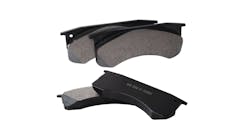As with any piece of equipment, not all dump bodies are created equal. There are a wide range of body types, configurations and capabilities, as well as numerous options. The reason being: no one dump body is right for every application.
It is essential, therefore, to do your homework before making any kind of a decision on what to buy. If a dump truck is not properly spec’d to handle the types of loads and weights it is expected to transport, there will be issues that will cause increased vehicle downtime for maintenance and repair, in addition to unforeseen and unplanned for expenses.
If you are replacing a dump truck body, realize that those original specs may not be optimal for today’s work, and that could potentially impede truck productivity and increase operating costs.
Determining the answers to these seven questions will help guide you to determining what dump body, features and options will best meet your needs and requirements.
1. How will the dump truck be used?
Will the dump body truck be used for a specific purpose, such as loose gravel, or will it be used for a variety of purposes, such as carrying construction debris, rock, dirt, grain, gravel, sand, stone, asphalt, etc.
What will be the size of the materials hauled? Will it be a constant load or will it diminish with deliveries throughout the day?
2. How much weight will be carried?
This needs to be known in order to help determine the necessary size of the truck chassis. Payload requirements could be such that a medium duty chassis will not be able to the job. Depending on loads, weight of the dump body and ancillary equipment installed on the truck, you may have to move up to a heavy duty truck chassis for a higher gross vehicle weight rating (GVWR).
Another consideration is whether the dump truck will pull a trailer. If so, what will be the length of the trailer, how much weight will it be carrying and what is the total anticipated weight of the trailer and the cargo?
Here again, chassis capacity comes into play. Trailering requirements influence what GVWR will be required.
3. What is the anticipated vehicle lifecycle?
How long the dump truck will be kept in operation has an impact on body selection as well. If the truck will be operated for the long term, it may be appropriate to spend more for a dump body built for longevity. Conversely, it may make sense to go with a lower-priced body if the truck will have a shorter lifecycle.
4. What size dump body is required?
Depending on the particular type of dump body, payload-carrying capacity may be specified in length, height or width, or in cubic yards.
Body styles are traditional, also called square or rectangle, and elliptical. Typical front dump body choices include sloped front, straight front or bailmount.
Among the common types of medium duty dump body are:
- Conventional dumps.
- Contractor dumps. These have fold-down sides for easy loading and unloading of material.
- Flatbed/platform dumps.
- Landscape dumps. These typically feature removable high side and rear panels (vented or solid), swing-out rear or rear barn doors and a drop down tailgate.
- Two-way dumps. These combine rear dumping and side dumping in one body.
5. What is the operating environment?
On what types of roads and conditions will the dump truck be operating? Will the truck be spending a lot of time on rough jobsites or will most of the hauling be on roads and highways?
Doing a lot of work off-road and on rough terrain with heavy loads might necessitate the need for a stronger body to handle the pounding of a rough ride.
For those operations that will be hauling a lot of loads per day, cutting vehicle weight can be profitable. This can be done by spec’ing lightweight components and choosing the smallest practical fuel tanks.
6. What should be the material composition of the dump body?
Dump bodies can be made from aluminum, stainless steel or steel. The type of material used to construct the body makes a big difference to its performance. Various thicknesses and strengths impact cost, weight, payload capacity and resistance to wear, impact, abrasion and corrosion.
Steel typically costs less and is well-suited for daily heavy duty use. Be aware that steel comes in many different strengths and thicker is not always better. High-strength steels allow the use of thinner materials that have higher yield ratings to add strength and can reduce body weight significantly.
Lighter bodies increase body life, payload capacity and hauling revenues.
Stainless steel and aluminum provide the best resistance to corrosion.
Aluminum, the lightest of the three materials, offers a greater payload capacity. It also provides a “sharper” appearance. However, aluminum is softer that steel and can be more easily damaged.
7. What options are available for dump bodies?
There are a whole host of options that can be added to enhance a dump body's performance and versatility. These include:
- Cab shields/protectors.
- Lighting.
- Tarping systems.
- Ladders.
- Steps and gradhandles.
- Walk rails.
- Side configurations.
- Body vibrators.
- Tailgates.
- Spill aprons.
- Mudflaps.
- Hitches and pintle hooks.
- Underbody toolboxes.
- Paint and finishes.
- Application specific options like insulated bodies, bedliners, tailgate spreaders, etc.
SEEK COUNSEL
When it comes to vehicle specifications, a best practice is to seek input from truck OEMs, body and equipment manufacturers and suppliers and upfitters to ensure that you spec the most appropriate vehicle for the intended applications. Because vehicles and equipment are constantly changing, they can update you on new advancements that you may not be aware of.
Taking the time and effort upfront to figure out what is needed and available to design a vehicle specifically for its tasks will pay dividends in peace of mind and money saved down the road.
An improperly specified truck can affect the safety, reliability and productivity of the vehicle. This can result in higher operating costs due to inefficiency, mechanical failures, downtime and/or higher capitalized cost.






